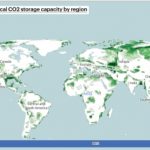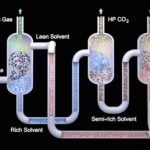Underground geological formations have more space to store CO2 than we’ll ever need, by orders of magnitude. But the process of assessing the best locations can take up to ten years, so that work needs to start now, say Raimund Malischek and Samantha McCulloch at the IEA. The main constraints are technical (which porous rock formations absorb CO2 most easily, etc.), while the displacement of land use and public acceptance must also be considered. … [Read more...]
EEMPA solvent and CO2 mineralisation can take us one step closer to our carbon capture goals
If the models are correct that global carbon emissions will keep rising until at least 2040 then carbon capture and storage (CCS) is essential. And most of the vast amounts of CO2 we must capture won’t be “utilised” as it’s more than we can possibly use. So storage is an essential part of the equation, explains Jim Conca. He scopes out the problem before looking at two innovations that can bring costs down and bring the technology one step closer … [Read more...]
10 Carbon Capture methods compared: costs, scalability, permanence, cleanness
We need to understand carbon capture, storage and utilisation (CCUS) better. To do so, this article looks at 10 methods and estimates how much CO2 each will take out of the atmosphere by 2050, and the cost per tonne. In their list the authors, Ella Adlen and Cameron Hepburn at the University of Oxford, cover the industrial (e.g. CO2-EOR, synfuels) to the biological (e.g. forestry, soil carbon sequestration). They say there are six that can be … [Read more...]




